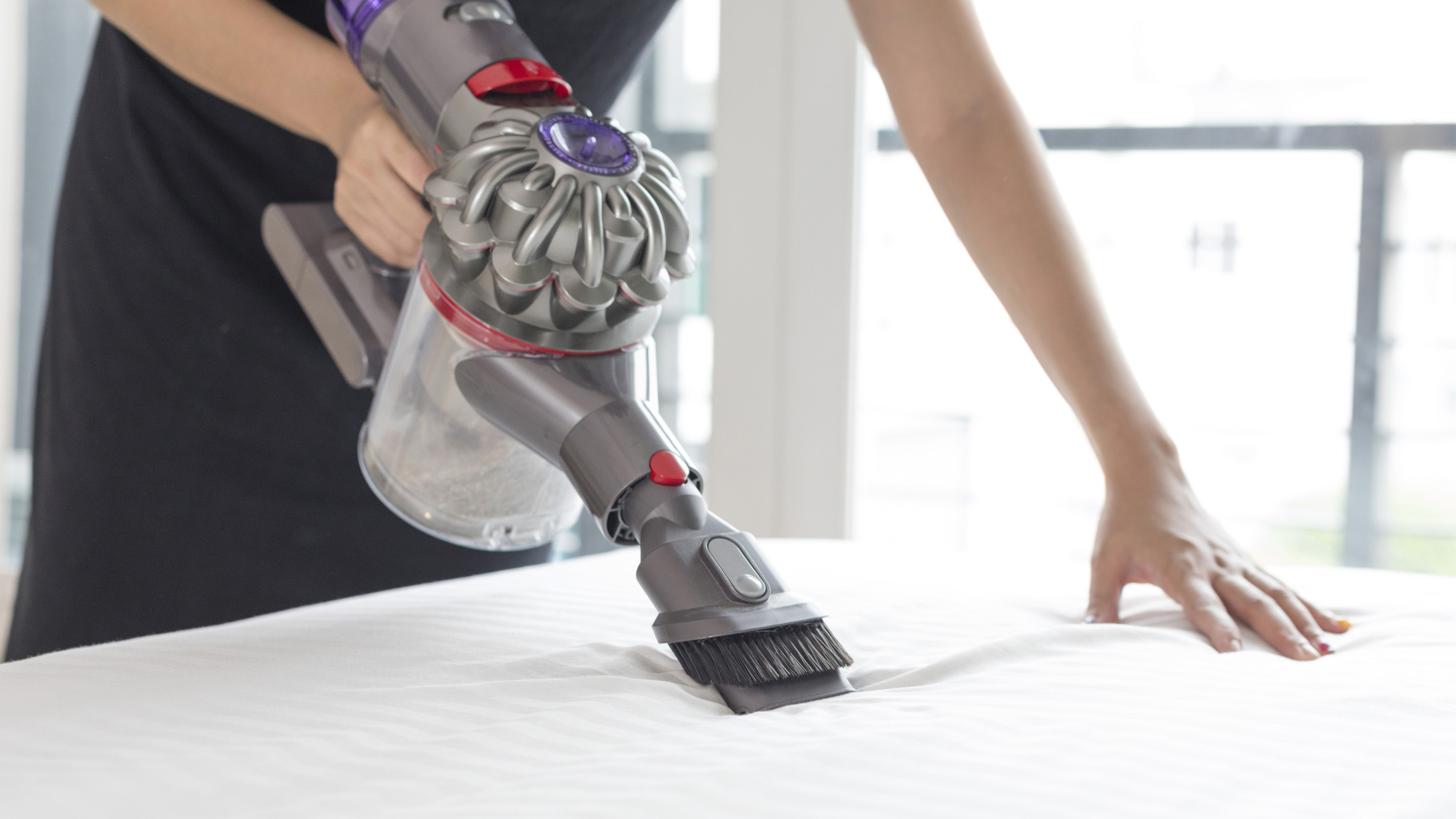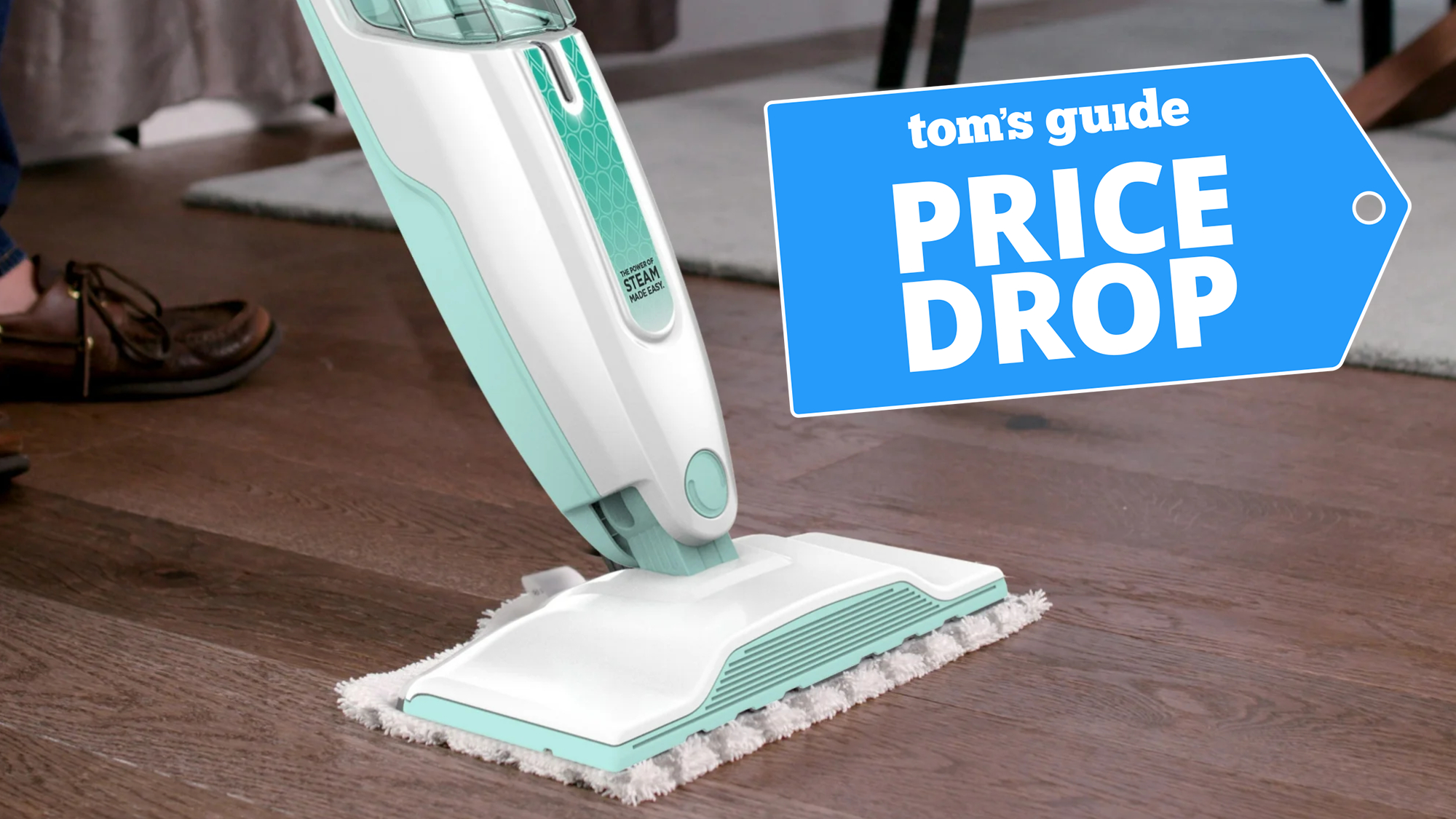How to deep clean your mattress to get rid of allergies: 7 proven tips and tricks
Deep clean your mattress and stop pollen and dust mites from disrupting your sleep — here's how

Not only are allergies aren't just difficult to deal with by day, they can also impact the quality of our sleep. Whether it's due to a high pollen count, a build up of dust mites or the presence of pet dander, these common allergens can settle on the surface of our mattress, leaving us to breathe them in all night long. This can result in an array of symptoms including a blocked nose, tickly cough, as well as worsening respiratory issues like asthma.
As mattress testers, we know that the best mattress for allergy sufferers will be one with hypoallergenic properties. However, even those specialist beds can fall foul to affects of common allergies if they aren't cleaned regularly enough. Your bed should be a space for rest and relaxation, and not a trigger for an allergic reaction.
If your mattress is past its best or you're looking for a new hypoallergenic one, head over to our 4th of July mattress sales hub where we've rounded up the best of the early deals. In the meantime, we've outlined the seven top mattress cleaning tips that all allergy sufferers should know.
- Read more: How to clean a Saatva Classic mattress
What are allergens and how do they end up on your mattress?

But first, let's take a look at what allergens are, how they impact your sleep, and why they make your mattress their home. Allergens are a type of antigen that causes an allergic reaction in some people. These allergens can arise from a number of things including pollen, dust, pet dander or mold spores.
For some, symptoms can be unnoticeable or mild. However, allergy symptoms for others symptoms include a runny nose, sneezing, coughing, itchy skin and eyes as well as an upset stomach. According to the lung association, allergic reactions to dust mites can trigger asthma attacks.
So how do allergens end up on your mattress? Allergies move through the air and settle on your mattress. Regular cleaning can help keep allergen levels down, particularly during the summer months when pollen levels are high..
Mattress cleaning for allergy sufferers: 7 proven tips and tricks
1. Vacuum your mattress regularly
One of the quickest and easiest ways to remove allergens from your mattress is to vacuum your mattress on a regular basis. Vacuuming will remove allergens that have worked their way right in to the fibers of your bed. You don’t need a special vacuum cleaner for this, just your regular household vacuum will do.
Sign up to get the BEST of Tom's Guide direct to your inbox.
Get instant access to breaking news, the hottest reviews, great deals and helpful tips.

However, using a vacuum cleaner that has a HEPA (high-efficiency particulate air) filter will make a big difference as it captures the allergens and stops them from circulating in the air. Also, use your upholstery attachment as that is more hygienic than using the same attachments that have been on your floors and it also works better to maintain the quality of the fabric on your bed.
When vacuuming your mattress always go over the surface at least twice so that you don’t miss any patches. You may want to use the stick attachment to get right into the corner and seams as if you do have dust mites, this is where they’re liking to be lurking. You should vacuum your mattress at least once a month but you may find it easier to get in to a habit of doing it every time you change your sheets.
2. Wash your bed sheets weekly
For best sleep quality, aim to wash your bed sheets weekly. Without regular washing, allergens can work their way deep into the layers of your mattress, where they will be harder to remove.
When washing your bed sheets it’s best to wash them at a 140ºF (60º C) . This is the temperature sweet spot for killing off any bacteria and dust mites that may be present. If you're worried about washing your bed sheets the right way then follow our step by step guide on the 7 mistakes to avoid when washing bedding for more tips and tricks.
3. Allow your mattress to breathe

If you wake up in the morning and the first thing you do is make your bed then stop. Studies show that making our bed can create a breeding ground for bacteria. This is because the sheets lock in the moisture that we’ve lost during the night. That then provides the perfect setting for dust mites to live and feed.
And the same goes for when you change your sheets. Rather than putting new sheets on straight away, leave your mattress to breathe for a while. Open up the windows to help improve ventilation and leave your blinds open as the UV rays from daylight will provide natural disinfection. Don’t forget to vacuum your mattress once you’re ready to put your sheets back on to remove any pollen that may have come inside whilst you were airing your mattress.
4. Sprinkle with baking soda
Baking soda is one of our favourite household items that you can use on your mattress. Baking soda works in a couple of ways to help keep your mattress clean and fresh as it can absorb moisture and deodorize any odors that may be hanging about. And incorporating baking soda into your mattress vacuuming routine will take your mattress maintenance to a whole new level.
Baking soda is also a pretty good weapon against any dust mites that may be on your bed. Take some baking soda and add a couple of drops of essential oils and give it a stir. One top tip is to use a flour sift to evenly sprinkle the baking soda across the surface of your mattress. Leave this to sit for a couple of hours, although, the longer you leave it the better, and then vacuum it away.
5. Prevent mold by cleaning up spills straight away
Mattresses get warm and humid and that humidity can be the perfect environment for mold to grow, which is another common allergen. Knowing how to spot mattress mold and dealing with it quickly can stop mold from spreading and potentially saving you the money of buying a new mattress.

Preventing mold from growing on your mattress takes a couple of difference approaches. First of all, always clean any spills or accidents straight away. If there’s any fresh liquid on your bed then blot this up and then use a simple cleaning solution of one part water, one part white vinegar and a couple of drops of mild detergent. Spray this on the area wipe away with a damp cloth after around 30 minutes. Never get your mattress too wet and always leave your mattress to full dry before sleeping on it.
Secondly, you need to go back to tip one and vacuum on a regular basis. Vacuum the whole area of your mattress including the sides and all around your headboard. This will remove any mold spores that are starting. Once you’ve done this empty your vacuum into an outside bin and clean the inside of your vacuum to stop the mold from spreading.
6. Steam clean your mattress at the start of each season
Steam cleaning is one of the most effective ways to deep clean your mattress. Allergy sufferers should aim to steam clean their mattress at the start of every new season. Steam cleaning uses high temperature steam to be able to break down any dirt, allergens, mold and bacteria that have made their way into your mattress. Steam cleaning is also a good way to getting rid of dust mites and bed bugs as neither pest tolerates high heat. You can use a handheld steamer or if you don’t have one of those then you could even steam clean your mattress using an iron.
To steam clean your mattress effectively set your steam cleaner up to a high temperature between 212 to 250 degrees and then move slowly and evenly around the surface. Hold your steamer approximately 2-3 inches above your mattress. Try to avoid blasts of steam as you want to make sure the surface is damp, not wet. If you’re finding the mattress is getting too wet, just lift the steamer up a little higher. Always leave the mattress to fully dry before you add your bedding back onto the bed.
It is important not to use a steam cleaner with memory foam mattresses, memory foam is highly porous and very heat sensitive so you could find that by using this method you’ll break down the structure of the memory foam and damage it.
7. Create an anti-allergen spray

Once you've vacuumed your mattress then you can help to keep pollen and other allergens at bay by spraying the surface with anti-allergen spray. To make this just grab a clean spray bottle and mix one part water with one part rubbing alcohol. Give this mixture a shake and then spritz a light misting over the surface of your mattress.
The rubbing alcohol can disinfect and kill allergens, dust mites and mold spores on contact. It drys quickly so your mattress won't stay wet. Don't use rubbing alcohol if you have a memory foam or latex bed as these materials are highly sensitive to chemicals like alcohol. And before applying alcohol to your mattress, perform a patch test in a small area to make sure that it doesn't damage or discolor the fabric.
How to stop allergens from disrupting your sleep
As well as deep cleaning your mattress regularly, there are several other ways you can help stop allergens from infiltrating your mattress and ruining your slumber. They include:
- Shower before bed: Allergens tend to cling to clothes and hair so if you’re getting in to bed after a day of being out and about then you’re likely transferring those allergens on to your mattress.
- Keep pets out of the bedroom: If pets and their dander are triggering your allergies, it's time to stop them from sharing your bed.
- Keep your mattress protected: Keeping your mattress an allergen-free zone is easy if it's properly protected. The best mattress protectors will protect your mattress from unwanted allergens.
- Invest in an air purifier: The best air purifiers can clean the air in your home and remove any pollution and pollen that may be airborne. Some even have charcoal filters that can leave your bedroom smelling super clean and fresh. When looking for an air purifier choose one with a HEPA filter.

Rachael is a freelance journalist based in South Wales who writes about lifestyle, travel, home and technology. She also reviews a variety of products for various publications including Tom’s Guide, CreativeBloq, IdealHome and Woman&Home. When she’s not writing and reviewing products she can be found walking her Sealyham and West Highland terrier dogs or catching up on some cringe-worthy reality tv.
